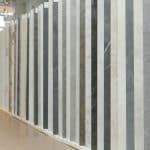There’s no denying that insulation is a crucial component when it comes to energy efficiency in homes. Whether it’s a new build or a conversion, ensuring your loft is properly insulated can significantly reduce energy consumption and result in considerable savings on your bills over time. With numerous insulation options available – from wool to insulating boards – determining the best method to insulate your loft conversion can be a challenging process. In this article, we’ll delve deeper into all you need to know about effective loft insulation, helping you make an informed decision.
Understanding the Importance of Loft Insulation
Before we delve into the most effective ways to insulate a converted loft, let’s briefly discuss why loft insulation is so important. An uninsulated or poorly insulated loft can be a significant source of heat loss in your home. This is because heat naturally rises and will escape through the roof if not properly contained. This can result in your home becoming cold during the winter and overheated during the summer. By insulating your loft, you can drastically reduce this heat loss, increase your home’s energy efficiency, and make substantial savings on your energy bills.
Cela peut vous intéresser : What Are the Top Non-Electric Heaters for a Sustainable Home?
In addition to heat regulation, insulation can help in noise reduction, creating a quieter and more peaceful living space. It can also reduce the risk of issues like damp and mold, which can sometimes occur in uninsulated loft spaces.
Evaluating Different Loft Insulation Materials
When it comes to loft insulation, the material you choose is critical. The most commonly used insulation materials include mineral wool, insulating boards, and spray foam. Each of these has its benefits and drawbacks, which we will discuss.
Sujet a lire : What’s the Best Method for Constructing a Space-Saving Built-In Wardrobe?
Mineral wool, typically made from glass or rock fibers, is a popular choice for loft insulation. It is affordable, easy to install, and provides excellent thermal performance. However, its effectiveness can diminish if it gets wet, so it is not the best option for lofts prone to dampness.
Insulating boards, made from materials like polystyrene, are another option. These boards are incredibly effective at retaining heat and are resistant to moisture. However, they can be more costly and require a professional for installation.
Spray foam insulation offers the highest level of performance and is particularly effective at sealing small gaps and cracks. On the downside, it is the most expensive option and requires a professional team for proper application.
Choosing the Best Insulation Method for Your Loft Conversion
While choosing the right insulating material is crucial, the method of insulation used plays an equally important role in its effectiveness. The two most common methods are cold loft insulation and warm loft insulation.
Cold loft insulation involves insulating the floor of the loft, preventing heat from entering the loft space. This is generally the cheapest option and is an effective way of preventing heat loss. However, if you’re planning to use the loft as a living space, you’ll need to consider warm loft insulation.
Warm loft insulation involves insulating the roof or rafters of the loft, allowing the loft space to be heated along with the rest of the house. This method is typically more expensive but is the best option for converted lofts intended for living use.
Estimating the Cost of Loft Insulation
The cost of insulating your loft will depend on several factors, including the size of your loft, the type of insulation material used, and whether you decide to hire professionals or take on a DIY project. It’s worth noting that while DIY can be a cheaper option upfront, hiring a professional team ensures that the insulation is installed correctly and performs at its maximum efficiency, which can result in more significant energy savings in the long run.
Another consideration is the potential savings from energy efficiency. The Energy Saving Trust estimates that insulating your loft could save you between £115 and £215 annually on your energy bills, depending on your home’s size and the insulation’s thickness. Over time, these savings can offset the initial cost of the insulation.
Making the Most of Your Loft Conversion with Good Insulation
In conclusion, insulating a converted loft is an investment in your home’s energy efficiency, comfort, and value. The best insulation for your loft will depend on your specific circumstances, including your budget, the loft’s intended use, and the climate in your area. Whether you opt for mineral wool, insulating boards, or spray foam, remember that the goal is to create a comfortable, energy-efficient space that will serve you and your family for years to come.
Consideration to Insulation Kits
In the insulation market, there are ready-made kits available, specifically designed for loft conversions. These insulation kits are tailored to be a complete solution to cater to almost every loft scenario and come supplied with everything needed to insulate a loft, such as insulation boards, stud frames, and fixings.
One of the most commonly used insulation kits is the YBS SuperQuilt, a multi-layered insulation blanket that provides a high level of thermal resistance while being thin, flexible, and easy to install. The SuperQuilt is renowned for its impressive performance in reducing heat loss and promoting energy efficiency.
The insulation kit you choose will depend on the specific requirements of your loft conversion. For instance, if you have a pitched roof, you might consider a kit designed for roof insulation, such as the YBS SuperQuilt. Conversely, for a flat roof, a PIR (polyisocyanurate) insulation board kit might be more suitable.
Choosing an insulation kit can simplify the decision-making process and offer an efficient, comprehensive solution. However, remember to consult a professional to ensure the kit is compatible with your loft’s design and meets all the necessary building regulations.
The Impact of Insulation on Eco-friendliness and Sustainability
Energy efficiency is not only about reducing energy bills; it’s also about creating a more sustainable, environmentally friendly home. By properly insulating your loft, you contribute to reducing your home’s carbon footprint.
When insulated correctly, lofts can help maintain a more consistent indoor temperature, minimizing the need for artificial heating or cooling. This results in lower energy consumption, leading directly to fewer carbon emissions. A well-insulated loft lessens the strain on your heating and cooling units, helping to extend their life and reducing the frequency of replacements, further contributing to sustainability.
Therefore, insulating your loft conversion is not just a savvy financial move; it is also a responsible environmental choice. It means you’re making a concerted effort towards energy conservation, and ultimately, fostering a more sustainable future.
In Conclusion: Make Your Loft Conversion More Efficient with Quality Insulation
In essence, the effectiveness of loft insulation lies in the choice of insulation material, the insulation method used, and the particularities of your loft conversion. Taking the time to research and understand the different materials and methods available can go a long way in ensuring you get the most out of your loft’s insulation.
Whether you choose mineral wool, insulation boards, an insulation kit like YBS SuperQuilt, or spray foam, remember that achieving a well-insulated loft conversion means reducing heat loss, increasing energy efficiency, and potentially lowering energy bills.
It’s crucial to take all aspects into consideration, including upfront costs, potential energy savings, and overall impact on the environment. The right insulation will not only create a comfortable and energy-efficient living space but also contribute to a more sustainable, eco-friendly home.
Finally, while DIY loft insulation may seem a tempting cost-saving measure, it’s worth considering hiring a professional team to ensure the insulation is installed correctly and performs at its peak efficiency. This investment can often result in more significant energy savings in the long run, offsetting the initial cost and adding value to your home.
Take the leap, insulate your loft conversion, and enjoy the benefits of a warm, energy-efficient home.






